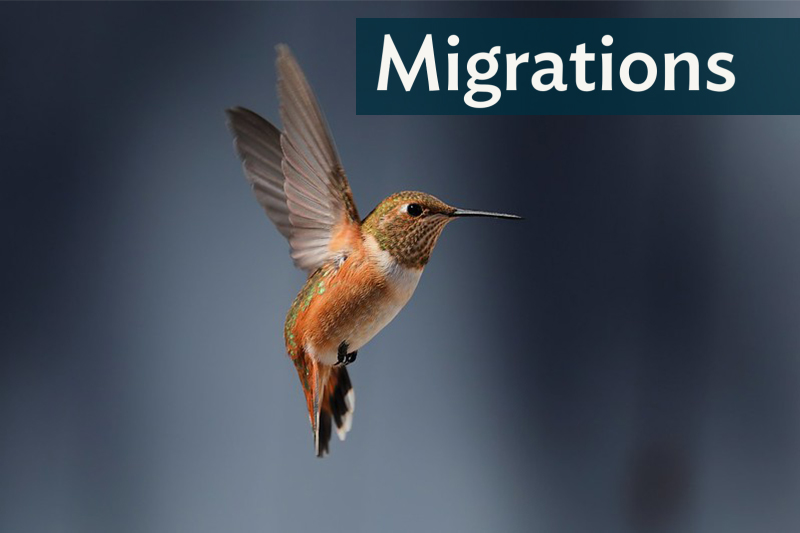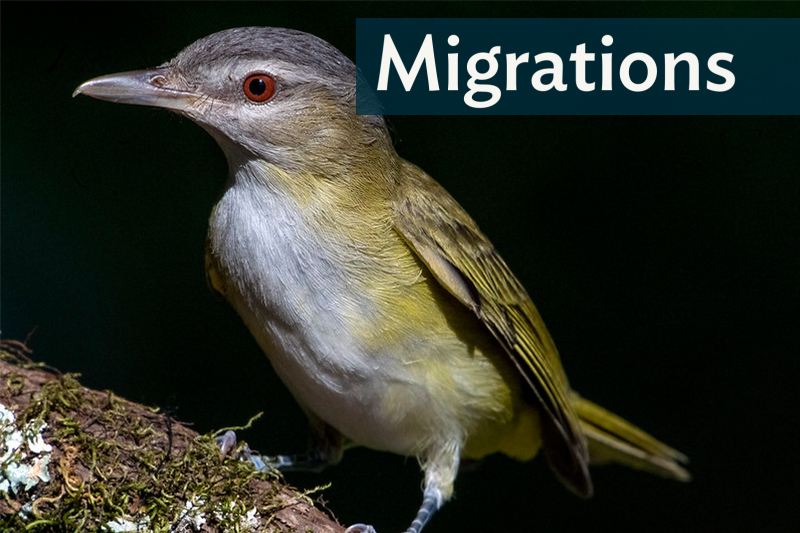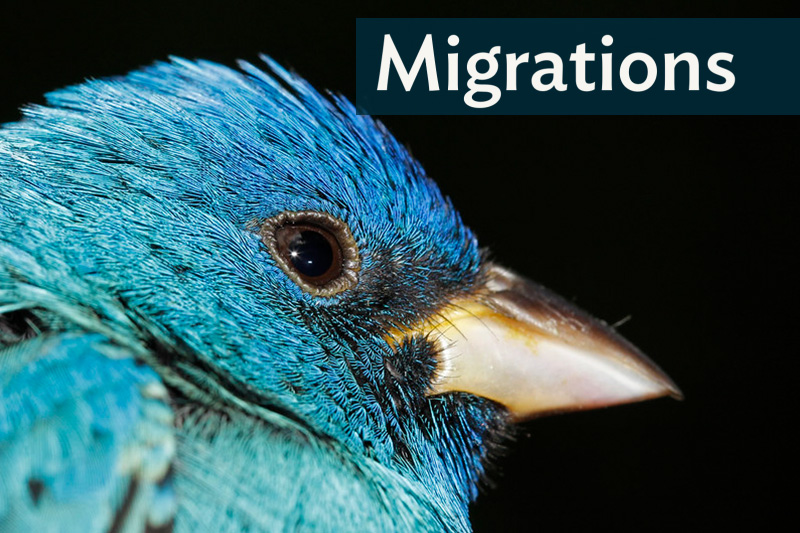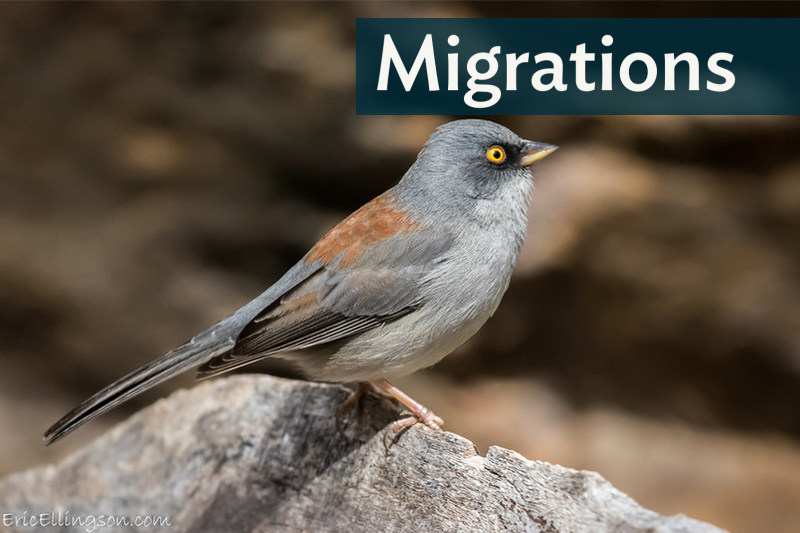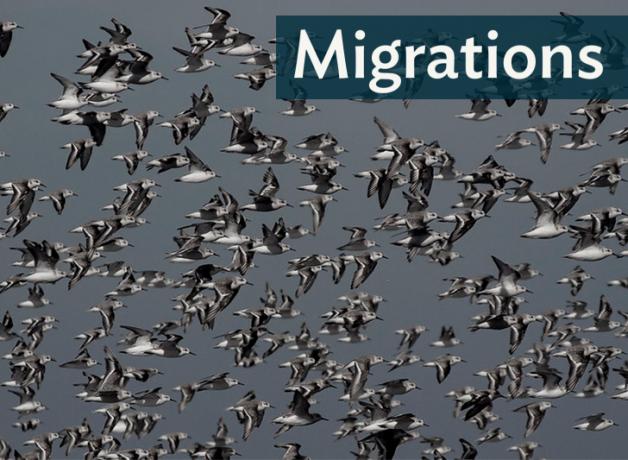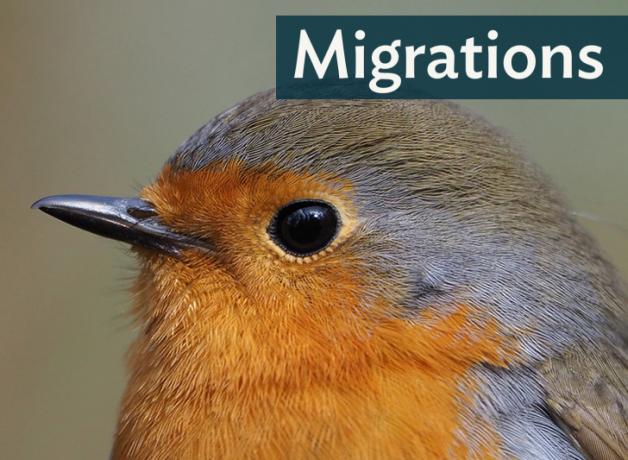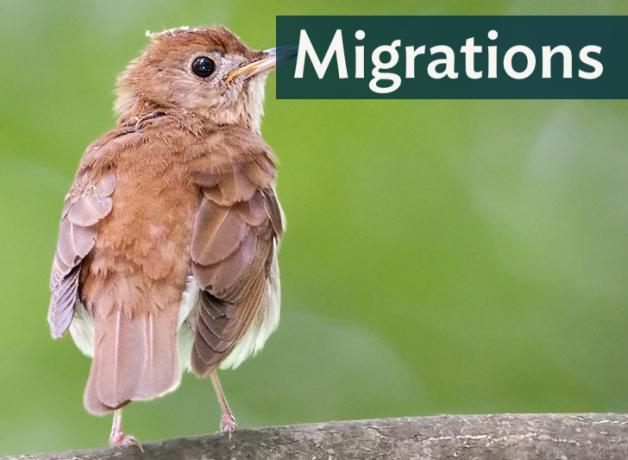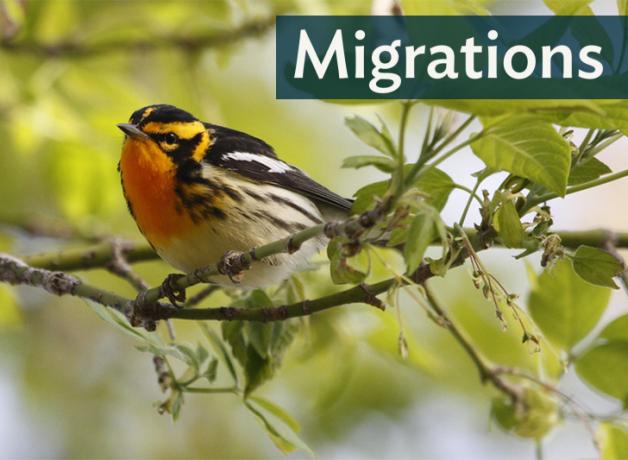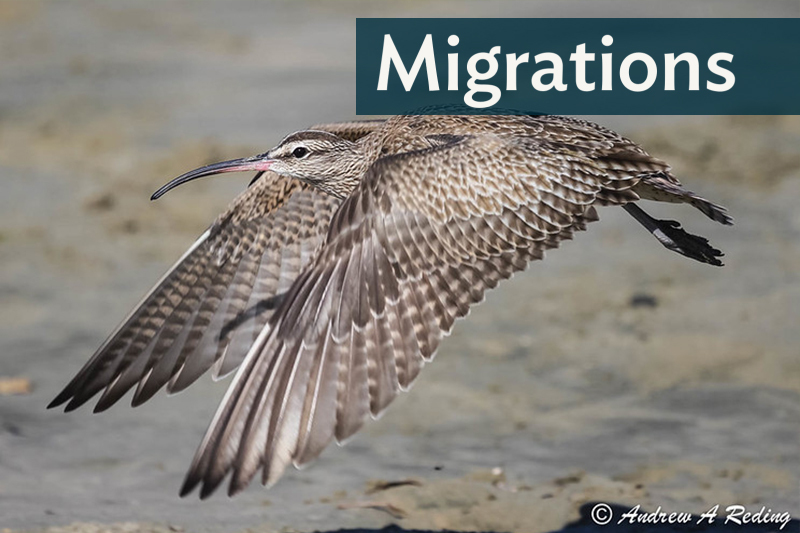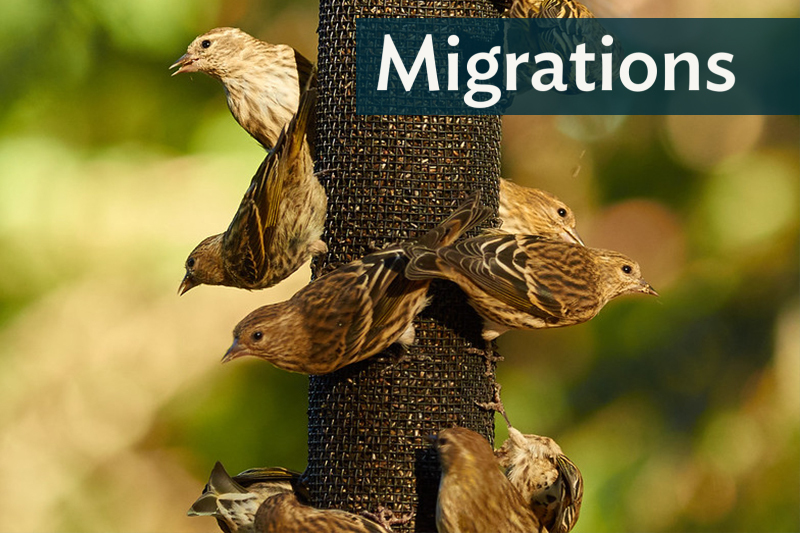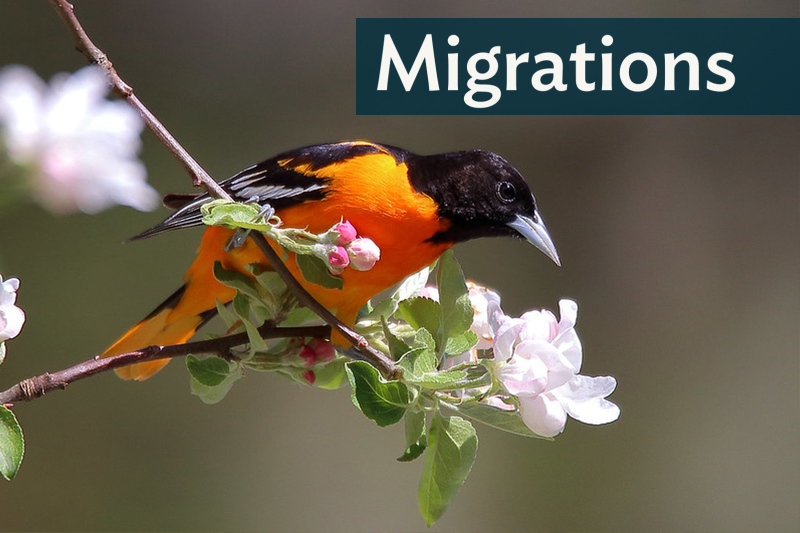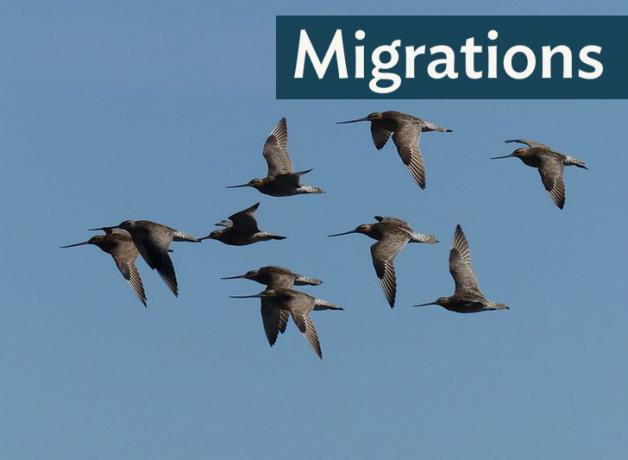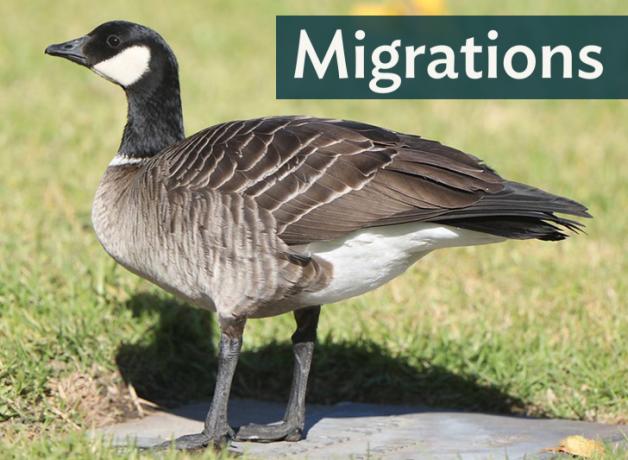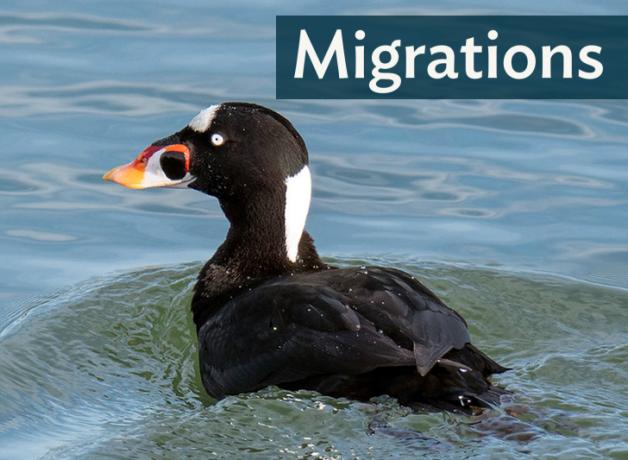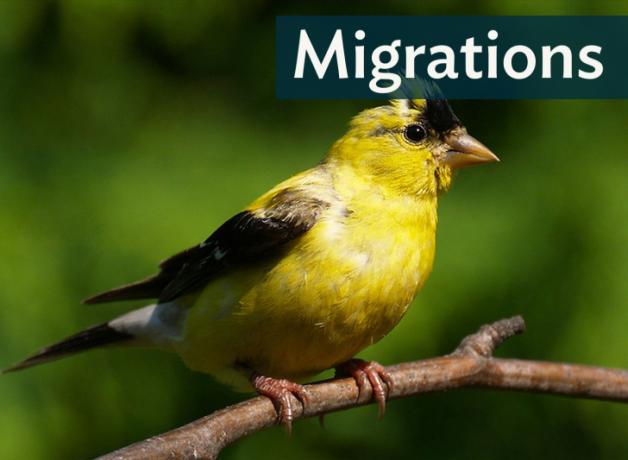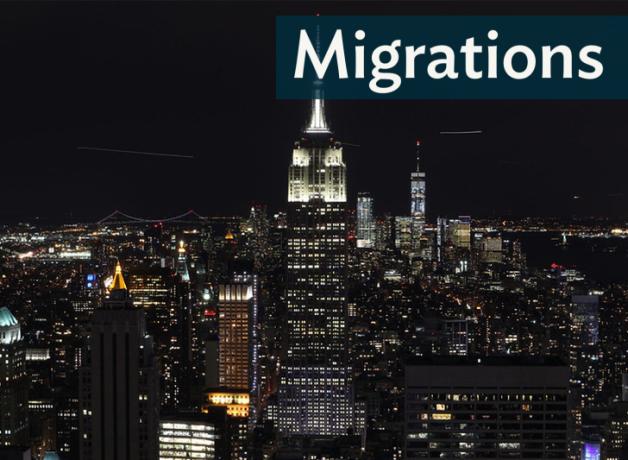

Join BirdNote tomorrow, November 30th!
Illustrator David Sibley and actor H. Jon Benjamin will face off in the bird illustration battle of the century during BirdNote's Year-end Celebration and Auction!
Celebrate the wonders of bird migration with this series of BirdNote Daily episodes written by science reporter Ariana Remmel.
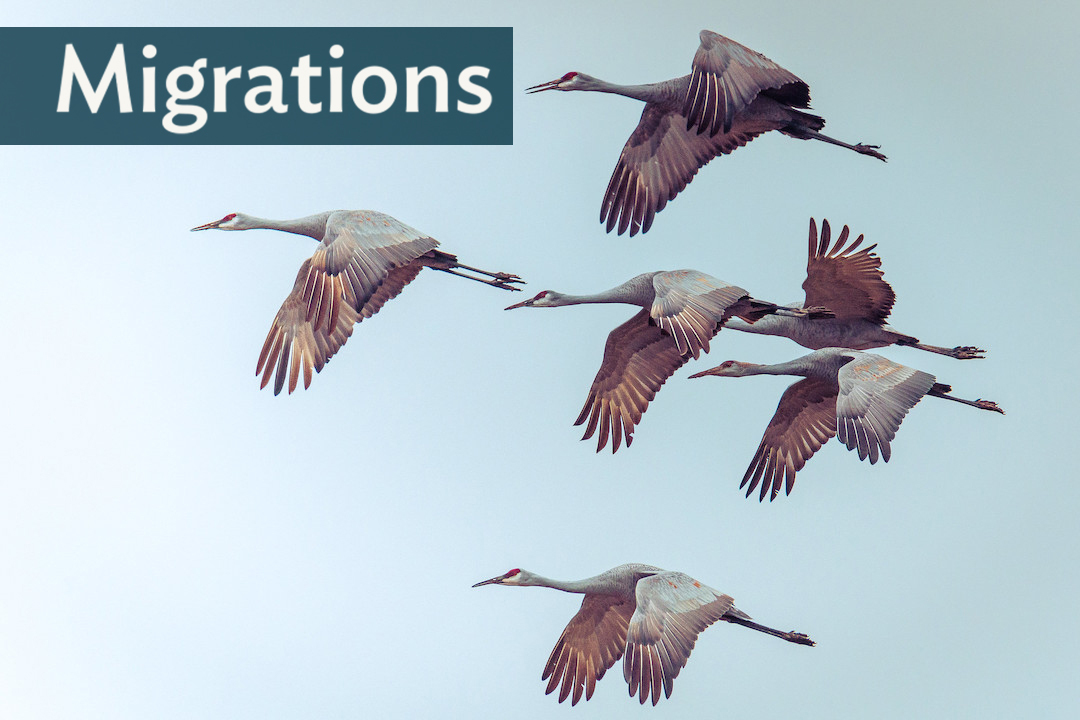
Coinciding with fall migration, these stories touch on some of the most mind-boggling and awe-inspiring aspects of the epic biannual journeys that some birds take, and how we humans can help them along the way.
Be sure to watch Unraveling the Mysteries of Migration: a special virtual event that aired in October 2021. Use the button below to watch the event recording on YouTube.
Tiny Bird, Epic Journey
In the spring, Rufous Hummingbirds journey from Mexico to the northwest U.S., some as far north as Alaska! That’s almost 1000 miles one way for a bird measuring just under four inches beak to tail, making this the longest migration of any bird relative to body length. Not long after arriving, they bulk up on nectar and bugs for the scenic return trip over the Rocky Mountains.
You're Going the Wrong Way!
During migration, some birds change orientation, often by a full 180 degrees, and travel almost the same distance — but in the opposite direction — as the rest of their species. The phenomenon is called misorientation. First-year birds are particularly susceptible. Many vagrant birds never find their way back on course, but some do, getting more comfortable with the route each year.
Indigo Bunting, Master Stargazer
The stars appear to rotate in the sky, raising the question of how birds can use stars to navigate during migration. Ornithologist Stephen Emlen brought Indigo Buntings to a planetarium, tracking their movements as the simulated night sky changed above them. The buntings oriented themselves using star patterns that appear to rotate the least — especially the North Star, Ursa Major and Cassiopeia.
Altitudinal Migration
Yellow-eyed Juncos sometimes make a migration of sorts — not from north to south, but from the high mountains to the lowlands or the other way around. It’s called altitudinal migration. In the warm summer months, some Yellow-eyed Juncos prefer to nest at higher elevations, while in winter, the scarcity of food pushes them back down to the valleys.
BirdCast
A blip on weather radar might not be a cloud — it could be thousands of birds! Biologists use radar to keep track of migratory birds, insects, and bats. An online resource called BirdCast combines decades of biological research, citizen science observations, and radar data to forecast the movements of migratory birds. You can use these predictions to help plan a birding trip.
Can Birds "See" Magnetic Fields?
Some migratory songbirds such as European Robins have special light-sensitive proteins called cryptochromes in their eyes. New research suggests how the cryptochromes could alter their behavior in the presence of magnetic fields, giving birds a visual cue for north and south. Other birds can navigate with the help of a mineral called magnetite in their beaks.
Veeries Predict Hurricanes
In some years, tawny-colored thrushes called Veeries cut their breeding season short. Researchers discovered that Veeries tend to stop breeding early in the same years that the Atlantic hurricane season is particularly severe. Surprisingly, Veeries are sometimes better at predicting hurricane conditions than computer models! Despite their forecasting prowess, though, Veeries are vulnerable to climate change.
Songbirds Flock to Urban Greenspaces
After flying all the way from South America, migratory songbirds that fly through cities often seek out urban green spaces such as parks and cemeteries. These modest-sized areas can act as verdant oases in the middle of pavement and metal and can be hidden gems for city dwellers hoping to see migratory birds in their neighborhoods.
A Whimbrel’s Wayward Journey
Biologists with Manomet tagged a Whimbrel named Lindsay with a GPS tracker. She has spent the summer breeding in the Arctic National Wildlife Refuge on the northern coast of Alaska. As fall migration begins, she heads straight into a storm in the Gulf of Alaska. The tempest slingshots her toward British Columbia, where she picks up a tailwind down the California coast. Landing near San Francisco, she rests and refuels.
Pine Siskin Irruption
Do you ever see flocks of birds in your yard that show up in droves one year, but are completely absent the next? Some nomadic species such as Pine Siskins move based on the availability of food and habitat. It’s called “irruptive” migration, and it sometimes leads to backyards full of siskins. While these flocks are a delight for bird watchers, the dense groups can easily transmit diseases such as salmonellosis.
Which Came First, North- or South-bound Migration?
Every year, hundreds of bird species migrate between North and South America. Some species likely evolved from ancestors that moved north in search of new breeding habitats: the “southern home” hypothesis. But others may have extended their winter ranges south: the “northern home” hypothesis. Many birds have likely gained and lost the ability to migrate multiple times over the course of evolution. And it’s still happening today.
Migration Takes Guts — Until It Doesn’t
This Bar-tailed Godwit makes one of the longest migrations of any animal — a 7,200-mile non-stop flight each autumn from western Alaska to New Zealand. In his book A World on the Wing, Scott Weidensaul explores the remarkable transformation godwits undergo to make this migration possible. Their digestive organs shrink as their weight more than doubles in stored fats and muscle mass.
The Triumphant Comeback of the Aleutian Cackling Goose
Aleutian Cackling Geese, which have a slighter build and shorter beak than Canada Geese, build their nests on a chain of islands off the western coast of Alaska. In the 1700s, fur traders introduced foxes to the islands, nearly wiping out the geese. For decades, they were believed to be extinct. But in the 1960s, a biologist discovered about 300 birds nesting on Buldir Island. Habitat protections have allowed their populations to recover.
Watching Seabirds Summer at the Lake
Many oceanic species like grebes, loons, pelicans, and gulls migrate far inland to raise their young near freshwater lakes. Ring-billed Gulls, for example, breed throughout the northern U.S. Forster’s Terns can be found catching fish in the upper Midwest in the summer. In northern Canada, you may even catch a glimpse of a Surf Scoter as it dives below the glassy surface of the lake. These species return to the coasts for the winter.
Molt Migration
At the end of summer, the once-bright feathers of a male American Goldfinch look ragged. Growing new flight feathers in a process called molting makes him more vulnerable to predators. Before migrating to wintering grounds, many songbirds stop at a secondary location to undergo the indignities of molting. It’s called molt migration. The places birds go to molt could be important targets for conservation efforts.
Watching Migration from the Empire State Building
As the sun sets over New York City, author Helen Macdonald takes in the wonders of spring migration from the top of the Empire State Building. She watches a long procession of songbirds pass overhead, but her joy is dampened when she notices some of the birds circling endlessly around the building’s brilliant beacon. Turning off the blaring lights of city skylines — and even suburban homes — can help protect migratory birds at night.
Sandhill Cranes © Don Sniegowski
Rufous Hummingbird © Charles Gates
Yellow-green Vireo © Doug Greenberg
Indigo Bunting © Dan Mooney
Yellow-eyed Junco © Eric Ellingson
Sanderlings © Rafael Edwards
European Robin © Frank Vassen
Veery © Kelly Colgan Azar / FCC
Blackburnian Warbler © Paul Hurtado
Whimbrel © Andrew Reding
Aleutian Cackling Goose © Always a Birder! / FCC
Bar-tailed Godwits © Kristine Sowl / USFWS
Surf Scoter © Doug Greenberg
American Goldfinch © Eric Bégin
New York City Skyline © Bastian Schmidt

